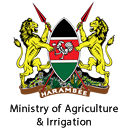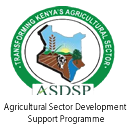However, any new technology requires order to co-exist within the business ecosystem. During the 2018 Global CGIAR Platform for Big Data in Agriculture Convention in Nairobi, Information Cabinet Secretary Joseph Mucheru said that there are four “enablers” that must act together to ensure successful data harnessing. They include political support, open data legislation, data infrastructure and demand for data by all stakeholders including farmers, academics, government, NGOs.
To illustrate, mobile money debut in the country before the said support systems were in place. Literally, the cart was before the horse. Big data or data analytics, has come at a time when there is little understanding of the subject, its viability for commercialization and the aforesaid support structure.
What is Big Data
Big data is the process of systematically extracting information from huge data sets for predictive analytics or user behaviour analytics to determine business trends, prevent diseases, climatic changes and so on. Nonetheless, Big Data does not exist in a vacuum, it is an ecology that also relies on other technologies such as IoT, big data, analytics, and cloud computing.
IoT devices help in the first phase of this process — data collection. Sensors plugged in tractors and trucks as well as in fields, soil, and plants aid in the collection of real-time data directly from the ground.
Second, analysts integrate the large amounts of data collected with other information available in the cloud, such as weather data and pricing models to determine patterns.
Finally, these patterns and insights assist in controlling the problem. They help to pinpoint existing issues, like operational inefficiencies and problems with soil quality, and formulate predictive algorithms that can alert even before a problem occurs.
Applications
Food safety and spoilage prevention - The collection of data around things like humidity, temperature and chemicals will paint a picture of health around smart agricultural businesses;
Operation/equipment management - the use of technology like soil sensors, drones and livestock monitoring gadgets and in supply chain optimisation to produce reams of priceless data;
Yield prediction - the use of mathematical models to analyse data around yield, weather, chemicals, leaf and biomass index among others, with machine learning used to crunch the stats and power the making of decisions;
Precision Agriculture - The use of sensors and software for collecting data means that only a small amount of manual work is required to hand each business an instruction manual on how to guarantee the best return from their crops.
Risk Management - Now it’s possible for VCA to leverage data with a view to evaluating the chances of crop failure, weather, pest and disease infestation;
Using pesticides ethically - Administration of pesticides has been a contentious issue due to its side effects on the ecosystem. Big data allows farmers to manage this better by recommending what pesticides to apply, when, and by how much.
Germination
In 2011, The Kenya Government rolled-out the Open Data Initiative purposefully to make core government developmental, demographic, statistical and expenditure data available in a useful digital format for researchers, policymakers, ICT developers and the public.
Leapfrog to 2020, and measurable progress on the road to smart farming through various programs spearheaded by the government and its development partners have been witnessed. They include progress in areas of precision agriculture, GPS for climate and soil data, data collection and artificial intelligence, and an on-going national livestock identification system.
Government is pivotal in propagation the data agenda because it poses huge volumes of information. Through state agencies as such Kenya Diary Board, New KCC, KALRO, NCPB and so on, it has registered millions of farmers in their databases over the years. To optimise this data for Public-Private Partnerships, enterprise and research growth, it needs to be correlated by farmer capacity, demographics and value chain.
Private Sector Initiatives
Acumen Kenya is working with about 300 agrodealers countrywide in a process of stock aggregation. The firm though an app and Point-of-sale (POS) system availed to clients monitors stock level, sales volumes, brand demand, rejected or defective inputs among other parameters. This information is then used for credit reference for restocking and expansion.
Techno Brain and Quatrix Global have teamed up to optimize big data for origin and traceability of produce, and the distribution of vet-agro products. Sector players currently using this service include BIDCO and Sidai Africa.
BFAP South Africa and Amiran Kenya are developing a vast expanse of data to offer on-demand services and products even before the customer requisitions for a restock.
There are numerous examples on the adoption of Big Data in agriculture. However, collaboration among government, development agencies, research institutions and private enterprise is needed to preclude repetitive efforts in data collection and analytics.








